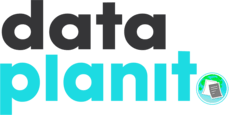Converting your documents into a digital format is just one step towards an improved workflow. Our bulk scanning solution can help lead your team into beginning to optimise digital paperwork. There are many ways to edit and sort documents to make them accessible and usable, similar to printed versions. Maximise the benefits of your converted documents by implementing the following tips to enhance your business’s overall workflow.
Data Planit is a bulk scanning solution for businesses that enables all prints and paperwork to be converted into digital documents. This includes standard sizes such as A4 and A5, along with awkward-sized items such as receipts and large-format prints. We specialise in converting every sheet so it’s easily accessible for the future while also securely recycling after our work has been completed. We also work towards helping businesses reduce their carbon footprint and help update your team’s workflow.
Document Conversion Tips: Ways to Optimise Digital Paperwork to improve Workflow
Document scanning is just the first step to improving your workflow, as there are a variety of ways to optimise digital paperwork. This includes methods of improving accessibility and even arranging documents that are related or key to the overall contents. Whether you wish to make documents more accessible or want to make everything easier to search through, we have compiled the best practices and digital edits that will improve the team’s use of your newly scanned documents.
Combine Relevant Documents

The sheer number of documents can be overwhelming, even as digital copies. From large-format prints to single-sheet pages, it is easy to get a surplus of files to sift through as time progresses for your business. However, there are ways to organise your documents without a labyrinth of folders. Merging pages and prints is the best way to reduce the surplus of files, especially if they are only relevant to one subject or piece of material. This can also be done with receipts by combining them into select weeks or months, depending on the volume. This way, you can easily search through your files and condense the information into bite-sized chunks.
Naming Conventions Matter
Naming of digital documents can sometimes be tricky, especially if the documents themselves are very specific. Therefore, the best way to optimise digital paperwork is to create a pattern and hierarchy of how you name your documents. Instead of naming these documents individually, it is always worth naming a range of documents like a form of label. By using a pattern for a naming convention, you can find any document more easily by using keywords as the first part of the name, which can help when searching for relevant documents.
An example of this is by changing the order of the words, such as “New-Site-Plan” instead of “Plan of New Site”. This way, you can also name other relevant documents that fit within the same search criteria, such as “New-Site-Proposal”. This is a simple change, but it can often be effective for a whole team that needs to find documents faster and efficiently.
Hyperlink to Any Relevant Materials
If you need to segregate any documents in separate folders despite being linked, always ensure there is a quick shortcut to get to them when needed. This can easily be achieved by directly linking the contents of a PDF or document by adding a hyperlink to the exact file or relevant directory. It is important that any referenced material or key external information is accessible at the click of a button. By creating hyperlinks in your documents, you can also create a better workflow for your team, allowing them to quickly jump to any needed information.
Find out how to get your business into a workflow by requesting a quote for large-volume scanning. Call us directly on 01375 859947 for more information and discover how we can help you optimise digital paperwork.
